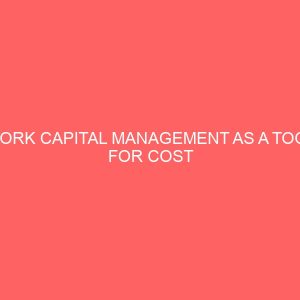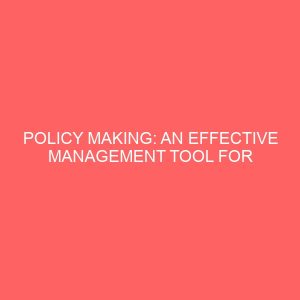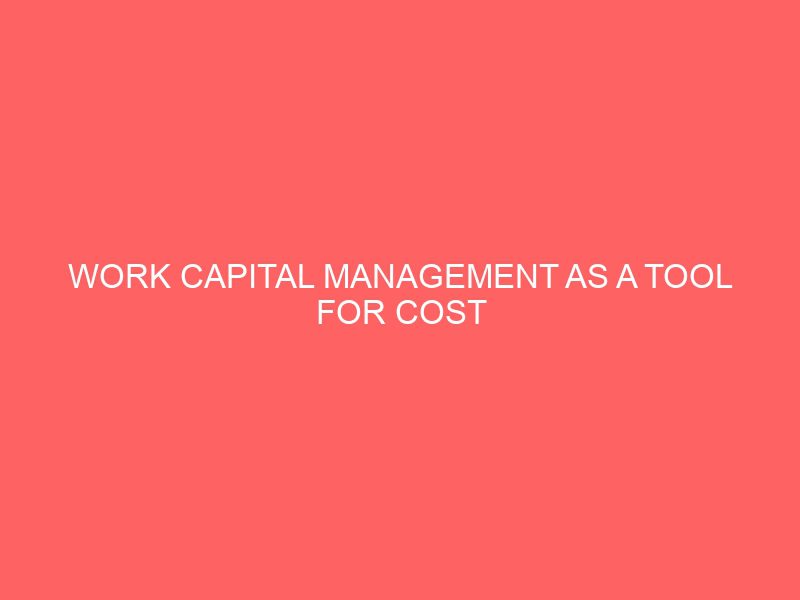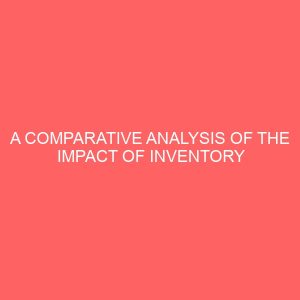Description
WORK CAPITAL MANAGEMENT AS A TOOL FOR COST MINIMIZATION AND PROFIT MAXIMIZATION
ABSTRACT
The objective of this research work contains working capital management as a tool for minimization and profit maximization with particular reference to Anambra motor manufacturing company, Enugu. The research design used was the survey method and the sources of data were both primary and secondary. The primary sources were interviews granted to me while the secondary sources of data were obtained from related literatures viz text books, internet, journals by different authors. Primary sources were from interviews and questionnaires. The data, Hypotheses were tested using chi-square. From the researchers findings, it is seen that profitability of a firm depend on the level of its working capital management. Although working capital management is creating problems in today’s business environment due to global developments of science and applied in business but ANAMMCO tries here best and maintained her liquidity position. The researcher would recommend that seminars and workshops be organized for the staff and management of the company on the effect and merits of effective and efficient working capital management.
CHAPTER ONE
INTRODUCTION
1.1 BACKGROUND OF THE STUDY
Capital can be classified into two broad categories based on tenure viz. long term and short term capital.
The long term capital of firms is committed to investment in fixed assets. It includes shareholders’ funds and long term loans. On the other hand, short term capital is applied for investment in current assets such as cash, marketable securities and short- term credits. Current assets are usually acquired very often in varying quantities depending on the demand structure for the firm’s product. Each time a decision to acquire current assets is taken, finance becomes inevitable.
However, it does not necessarily mean that cash has to be paid each time an order for recurrent production input is placed, rather it implies that just like in the case of fixed assets, every decision on current assets has financial implications. For instance, a firm has to decide how much of the material used for production of goods and services are to be on credit or on cash and carry basis. it also has to determine what proportion of its sale has to be on credit. Also both the optimum and minimum stock levels for raw materials and work-in-progress (WIP) have to be determined and maintained at a given point in time.
Orjih (2001:85) refers to working capital as a firm’s investment in short –term assets cash, marketable securities, trade debtors and stock, less current liabilities used to finance the current assets. He stated that working capital management therefore means the planning and controlling of both current asset and current liabilities. It involves the administration of cash receivables, inventories, marketable securities and the current liabilities.
He also discussed the two aspects of working capitals the “gross working capital: This means that the firm’s investment in current assets. Current assets are those which can be converted in to cash within an accounting year and they Include cash, short term securities, and debtor’s bills receivable and stock. Net working capital- this refers to the difference between current assets and current liabilities. Current liabilities are those of outside is which are expected to mature for payment within an accounting year. Net working capital can be positive or negative. It is positive when current assets exceed current liabilities and negative when current liabilities exceed current assets.
Davidson (1984:401) defined “working capital as “current assets less current liability”. He also defined it as “circulating capital”.
Weston &Brigham (1977:142) defined working capital management as “management decision on the amount of capital invested in various current assets and how this investment is to be financed”. It is fundamental and of great importance to a business as it enables the organization conduct its activities from free financial embarrassment.
Working capital management also aids the management to avoid the losses consequent upon incurring commitments below or above its capacity in ordinary course of business.
Retrof (1982:249) said that a firm should always maintain a sound working capital position for it to have enough to run its business activities. Both excessive as well as inadequate working capital position are dangerous from firm’s view point.
Excessive working capital means idle fund which means no profit for the firm, while inadequate working capital renders the firm unable to avail attractive credit opportunities and drastic reduction in the rate of return on total investment. The firm losses its reputation and capital base could be eroded, there by affecting the organizations credit worthiness.
Just as blood is life wire of any human being, the working capital of any company is the pivot around which its day-to-day operations revolve. it cuts across all departments and functions of an organization to the extent that all the organizational activities would ground to a halt of the working capital were not properly managed.
Therefore, the need for a sound and realistic working capital policy for a manufacturing from like Anambra Motor Manufacturing Company (ANAMMCO) becomes imperative
A BRIEF HISTORY OF ANAMMCO
The Anambra motor manufacturing company (ANAMMCO) was incorporated in 1977 as a private limited liability company. It was established in line with a joint venture agreement which the government entered with Daimler Benz Ag of Germany, now Daimler chyler AG (DCH) of Germany as the technical partners.








Reviews
There are no reviews yet.